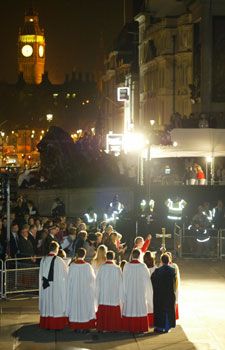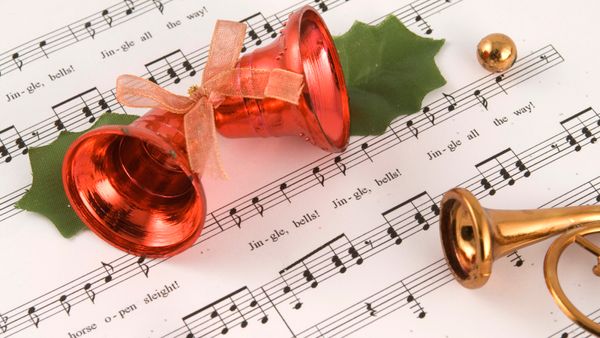Iconic Christmas Carols
Hundreds of Christmas carols have been penned over several centuries, but only a few have achieved legendary status. Here are a few:
"Silent Night"
Considered by some to be the most famous Christmas carol of all, "Silent Night" has varying legends behind its origin. The most famous legend involves Austrian priest Joseph Mohr, who composed the song with friend Franz Gruber on Christmas Eve despite the fact that their church organ was broken. "Silent Night," translated as "Stille Nacht" in German, was written in time for the church's midnight mass in the Bavarian town of Oberndorf. While the details of the story are unclear, and some believe parts are embellished or altogether untrue, Mohr and Gruber are credited with adapting "Silent Night," originally a poem written by Mohr, into a legendary Christmas carol.
Advertisement
"The Twelve Days of Christmas"
The carol has its roots in 18th-century England, as a memory-and-forfeit game sung by British children. One theory, however, believes that the carol was a catechism song for Catholics to learn "the tenets of their faith," as they could not openly practice in Anglican society from 1558 to 1829 [source: Snopes]. There is no substantive evidence that this was the case, nor is there any evidence that the verse symbolism contains anything uniquely Catholic.
"O Tannenbaum"
Also known as "O Christmas Tree," this carol originated in Germany, perhaps in the early-19th century, but the exact roots are unknown. While the hymn pays homage to what has become a universal symbol of Christmas, its melody is mimicked in the state anthems of Iowa, Maryland, Michigan and New Jersey.
"Joy to the World"
This carol is different from many in that it contains overt Christian imagery (Joy to the World, The Lord is come / Let earth receive her King). Its lyrics originated in the Old Testament as published in Isaac Watt's 1719 translation of the Psalms of David, but it was American composer Lowell Mason who crafted the melody in the 19th century.
"O Come All Ye Faithful"
Englishman John Francis Wade is credited with the words and collaborated with John Reading to give the hymn a melody and published it around 1751. It became a popular church hymn a century later when Frederick Oakeley translated it into English from Latin.
Related Articles
More Great Links
- NORAD Tracks Santa
- Northpole.com
Sources
- Hickey, Julia. "Carols, Wassailers, Waits and Mummers." Time-Travel Britain. (11/16/07).http://www.timetravel-britain.com/05/Dec/carols.shtml
- Supriya, Sharon. "Origin of Christmas Carols." One India. (11/16/07).http://living.oneindia.in/christmas/christmas-carols-songs/christmas-carols.html
- Ziegler, Laurie. "Christmas Caroling." The Virginian-Pilot. 12/23/94. (11/16/07).http://scholar.lib.vt.edu/VA-news/VA-Pilot/issues/1994/vp941223/12210158.htm
- "Carol (n.)" Online Etymology Dictionary. (11/16/07).http://www.etymonline.com/index.php?term=carol
- "Church Group Can't March in Holiday Parade." The Denver Channel, 12/2/04. (11/16/07).http://www.thedenverchannel.com/holidays/3963530/detail.html
- "The History of Christmas Carols." Woodlands Junior School. (11/16/07).http://www.woodlands-junior.kent.sch.uk/customs/Xmas/carols.html
- "The Hymns and Carols." Women for Faith and Family. (11/19/07).http://www.wf-f.org/Hymns-carols.html
- "The Story of Silent Night." Religion & Ethics-Christianity. BBC. 12/22/06 (11/16/07).http://www.bbc.co.uk/religion/religions/christianity/christmas/carols_2.shtml
- "The Twelve Days of Christmas." Snopes.com. 12/20/05. (11/16/07).http://www.snopes.com/holidays/christmas/12days.asp

